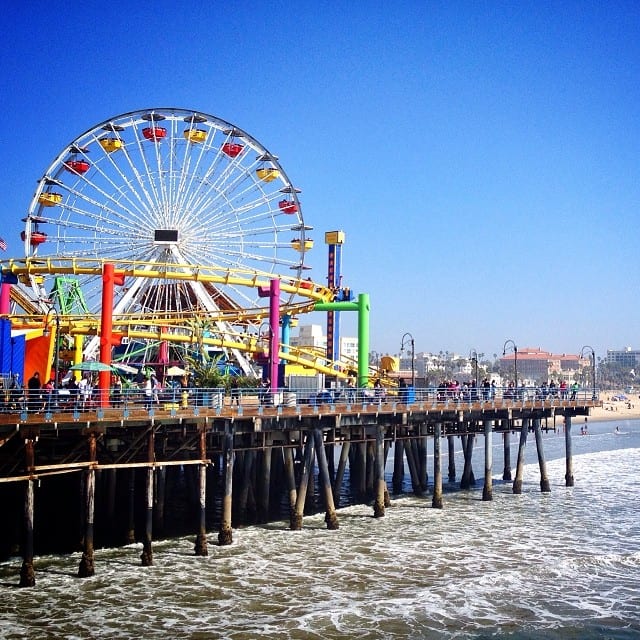


In January 1973, the Council scheduled an “Ocean Front Revitalization” public hearing at the Civic Auditorium and over a thousand people gathered to protest the island proposal.ĭespite the island proposal being rejected and while many of the assembled residents were outside celebrating, the Council surreptitiously passed a motion to tear down Santa Monica Pier. Needless to say, the public reacted and local residents formed Save the Santa Monica Bay, rallying enough support to ensure the project would not receive the required state and national approvals needed to proceed. In June 1972, the City Council unanimously approved the island project. None of these plans however, included the pier. Major changes to the Santa Monica coastline had been discussed as far back as the early 1960s and included converting the breakwater into a causeway connecting Santa Monica to Malibu and even a 35 acre island featuring a high-rise hotel, convention center and restaurants and four-lane bridge connecting it to Santa Monica.

Ongoing dredging and repair costs became a continuous financial drain on the City and by the early 1980s all that was left is what you see today. However, the breakwater was not considered a high priority and gradually began to fall into disrepair with many yacht owners simply moving their craft to other locations. In the summer of 1945, a 28 ft fishing boat moored alongside the pier exploded after an ignition spark caused spilt gasoline to catch fire, resulting in debris from the boat rocketing 200 ft straight up into the air. Those weird things that look like rocks, out to sea a bit and to the north-west side of the pier that you can still see today, are the remains of the breakwater and Santa Monica Yacht Harbor.ĭuring World War II, almost all of the pier’s operations were turned over to the war effort and the constant use of heavy vehicles transporting massive fishing catches meant that emergency repairs were required. Motion picture star Charlie Chaplin moored his yacht here and by August 1934, the harbor boasted 99 moorings. As soon as it was completed, it became extraordinarily popular. Like much of the country, the pier suffered during the Great Depression and in June 1930 the Santa Monica City Council voted unanimously to begin construction of a breakwater and small boat harbor. In 1924, more than 50,000 arrived to witness the opening of the new La Monica Ballroom, causing what has since been credited as Santa Monica’s first ever traffic jam. In August of the same year, the Looff Pleasure Pier officially opened, but it was sold to the Santa Monica Amusement Company in September 1923 after his death. The City closed the pier immediately and reopened after repairs in January 1921.Ī much more recognizable pier began taking shape in June 1916 when Carles Looff negotiated a 20-year franchise for the pier from the City and added an amusement arcade, a rollercoaster and carousel to the existing structure. The first of these unfortunate instances was just 10 years later when a 20 ft section of the north end suddenly dropped two feet while a sizable crowd was gathered to look at two battleships anchored in the bay.

Known then as the Municipal Pier, it quickly became a popular spot for locals and was touted as the best fishing spot in the bay.Ĭountless storms have unleashed their fury on the pier, boats have slammed into its pillings and even debris from other, less fortunate piers have battered it, but it has stood its ground through all of this time. To begin with, it was a far cry from how it looks today and it was originally constructed to carry waste pipes beyond the breaking waves – so sewage didn’t wash back onto shore – and had no amenities whatsoever. Since it first opened on September 9, 1909, the pier has endured just about everything both man and Mother Nature can throw at it. Sex offender spotted on promenade, pier.SMFD to conduct training exercise on Santa Monica Pier.Santa Monica Pier – Foot of Colorado Avenue – Built 1909, designated 1976.


 0 kommentar(er)
0 kommentar(er)
